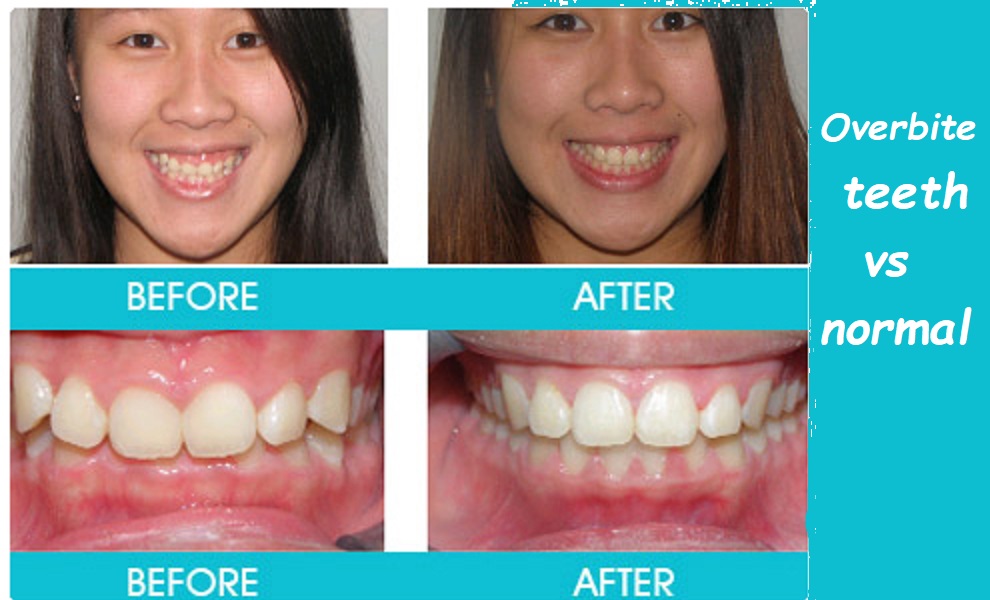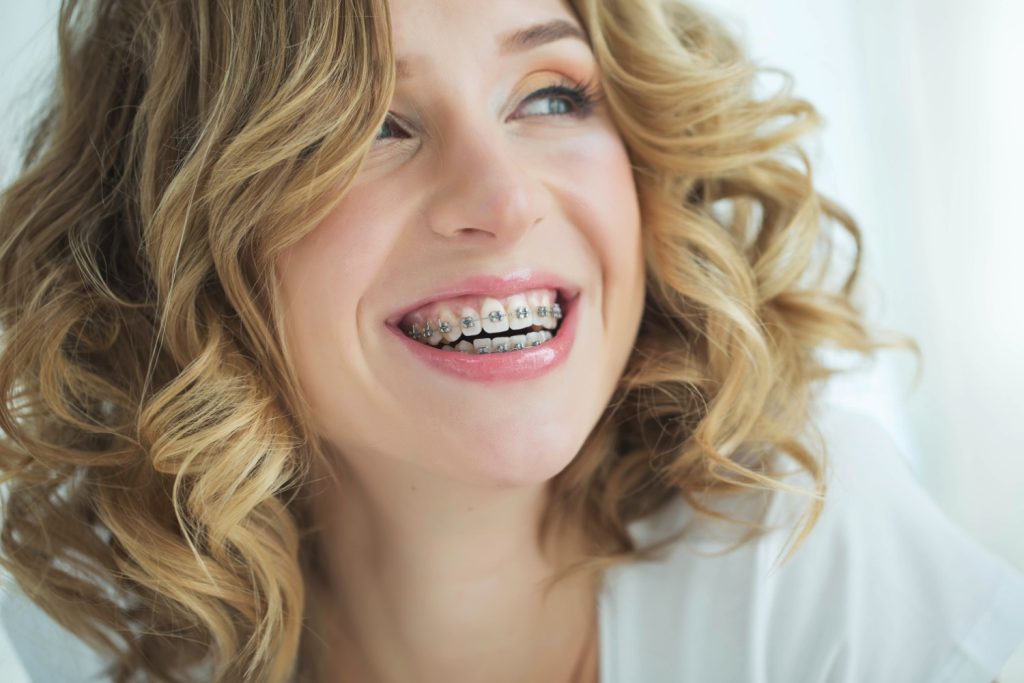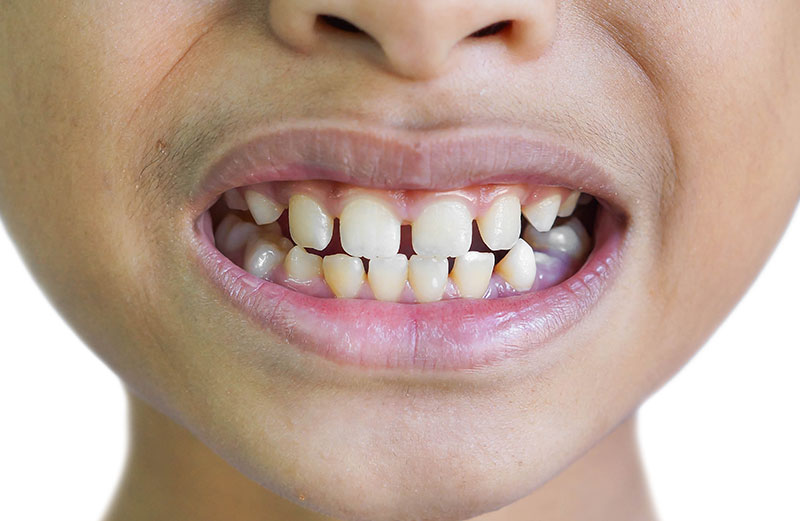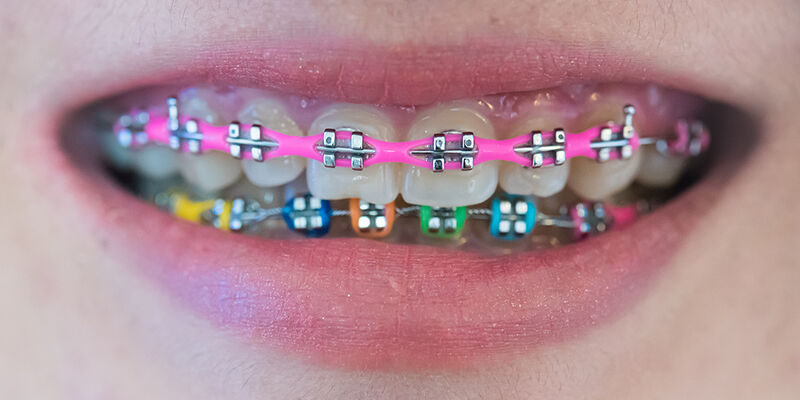Overbite teeth vs normal

Overbite Teeth vs. Normal Teeth: Understanding the Differences
Having a healthy smile involves more than just having straight teeth. The alignment of your teeth and jaws plays a crucial role in your overall dental health and appearance. One common dental issue is an overbite. Let’s explore the differences between overbite teeth and normal teeth, how to identify an overbite, and the potential impacts on your health.
What is an Overbite?
An overbite, also known as a deep bite, is a dental condition where the upper front teeth significantly overlap the lower front teeth when the mouth is closed. While a slight overlap is normal, an excessive overbite can lead to various dental problems and affect your appearance.

Types of Overbites
Overbites can be classified into two main types based on their causes:
1. Skeletal Overbite
A skeletal overbite is caused by the misalignment of the jawbones. This type is often hereditary and results from the way the upper and lower jaws grow. In severe cases, surgical intervention may be necessary to correct the jaw alignment.

2. Dental Overbite
A dental overbite is caused by the misalignment of the teeth rather than the jawbones. This type of overbite can often be corrected with orthodontic treatments such as braces or aligners.

Normal Teeth Alignment
In a normal teeth alignment, also known as an ideal occlusion, the upper teeth slightly overlap the lower teeth. This allows for efficient chewing and speaking while maintaining proper jaw alignment. Here’s what a normal bite looks like:
- Upper Teeth: The upper front teeth slightly overlap the lower front teeth.
- Molars: The molars fit together with the upper molars slightly outside the lower molars.
- Jaw Alignment: The jaws are properly aligned, allowing for a balanced and functional bite.
Identifying an Overbite
Identifying an overbite can be straightforward with a dental examination, but here are some signs you can look for on your own:
- Excessive Overlap: When the upper front teeth significantly cover the lower front teeth.
- Jaw Discomfort: Frequent jaw pain or discomfort, especially when chewing or speaking.
- Worn Teeth: Uneven wear on the lower front teeth due to excessive contact with the upper teeth.
- Speech Issues: Difficulty in pronouncing certain words or sounds.

Causes of Overbite
Several factors can contribute to the development of an overbite, including:
- Genetics: A family history of dental issues can increase the likelihood of an overbite.
- Thumb Sucking: Prolonged thumb sucking during childhood can push the upper teeth forward.
- Tongue Thrusting: The habit of pushing the tongue against the teeth while swallowing or speaking.
- Teeth Grinding: Chronic teeth grinding (bruxism) can alter the alignment of the teeth over time.
- Missing Teeth: The absence of certain teeth can lead to shifting and misalignment of the remaining teeth.

Potential Problems Caused by an Overbite
An untreated overbite can lead to several dental and health issues, including:
1. Tooth Decay and Gum Disease
The misalignment of teeth can create hard-to-clean areas, increasing the risk of tooth decay and gum disease.
2. Jaw Pain and TMJ Disorders
An overbite can cause strain on the jaw muscles and joints, leading to temporomandibular joint (TMJ) disorders and chronic jaw pain.
3. Worn Teeth
Excessive overlap can cause uneven wear on the teeth, leading to enamel erosion and increased sensitivity.
4. Speech Problems
An overbite can affect your ability to speak clearly, leading to difficulty in pronouncing certain sounds.
5. Aesthetic Concerns
A noticeable overbite can affect the appearance of your smile and facial profile, potentially impacting your self-esteem and confidence.
Treatment Options for Overbite
Treating an overbite often involves orthodontic interventions. The treatment plan depends on the severity and underlying cause of the overbite. Here are some common treatment options:
1. Braces
Traditional braces can effectively correct dental overbites by gradually moving the teeth into their proper positions. Braces consist of metal brackets and wires that are adjusted periodically to align the teeth.
Braces for overbite | Achieving a Balanced Bite: A Comprehensive Guide to Braces for Overbite
2. Clear Aligners
Clear aligners, such as Invisalign, offer a more discreet option for correcting overbites. These custom-made, removable aligners are worn over the teeth and gradually shift them into place.
3. Jaw Surgery
In severe cases of skeletal overbite, orthognathic surgery may be necessary to realign the jaws. This surgery involves repositioning the jawbones to achieve a proper bite.
4. Tooth Extraction
In some cases, extracting one or more teeth may be necessary to create space for the remaining teeth to align correctly.
5. Retainers
After the primary treatment, retainers are used to maintain the new alignment of the teeth and prevent them from shifting back to their original positions.
Preventing Overbites
While genetic factors cannot be controlled, certain habits and preventive measures can reduce the risk of developing an overbite:
- Avoid Thumb Sucking: Discourage thumb sucking and use of pacifiers beyond the age of three.
- Monitor Tongue Position: Encourage proper tongue positioning and swallowing techniques.
- Regular Dental Check-Ups: Regular visits to the dentist can help identify early signs of an overbite and other dental issues.
- Proper Oral Hygiene: Maintain good oral hygiene to prevent dental problems that can contribute to misalignment.
Buck Teeth from Thumbsucking: How a Childhood Habit Can Lead to Long-Term Dental Issues
Comparing Overbite Teeth and Normal Teeth
To better understand the differences between overbite teeth and normal teeth, let’s compare their characteristics in detail:
Alignment
- Overbite Teeth: Significant overlap of upper front teeth over lower front teeth. Misalignment may extend to the molars and other teeth.
- Normal Teeth: Slight overlap of upper front teeth over lower front teeth. Molars fit together properly, allowing for a balanced bite.
Jaw Position
- Overbite Teeth: Jaw alignment may be off, leading to discomfort and potential TMJ issues.
- Normal Teeth: Jaws are properly aligned, allowing for smooth movement and function.
Aesthetic Impact
- Overbite Teeth: Visible overlap can affect the appearance of the smile and facial profile.
- Normal Teeth: Balanced and even teeth contribute to a harmonious smile and facial symmetry.
Functional Impact
- Overbite Teeth: May cause difficulties in chewing, speaking, and maintaining oral hygiene.
- Normal Teeth: Efficient chewing, clear speech, and easier maintenance of oral hygiene.
Long-Term Effects
The long-term effects of having an overbite can be significant if left untreated. Understanding these potential consequences can underscore the importance of seeking treatment:
Dental Health
An untreated overbite can lead to chronic dental issues such as cavities, gum disease, and tooth loss. The difficulty in cleaning misaligned teeth creates an environment where bacteria can thrive, leading to decay and infection.
Jaw Health
Chronic jaw pain, headaches, and TMJ disorders can result from the improper alignment of the jaws. This can affect daily activities such as eating, speaking, and even sleeping.
Overall Health
Dental issues can impact overall health, contributing to conditions such as heart disease and diabetes. The inflammation from gum disease can spread to other parts of the body, affecting general health.
Conclusion: Understanding and Addressing Overbites
Overbite teeth and normal teeth differ significantly in alignment, appearance, and function. While a slight overbite is normal, a pronounced overbite can lead to various dental and health issues. Identifying an overbite early and seeking appropriate treatment can prevent complications and improve your quality of life.
FAQs
Q: What is the main difference between an overbite and a normal bite? A: The main difference is the degree of overlap between the upper and lower front teeth. In a normal bite, the overlap is slight, whereas in an overbite, the upper teeth significantly cover the lower teeth.
Q: Can overbites be corrected in adults? A: Yes, overbites can be corrected in adults using orthodontic treatments such as braces or clear aligners. In severe cases, jaw surgery may be necessary.
Q: Is an overbite harmful to dental health? A: An untreated overbite can lead to various dental issues such as tooth decay, gum disease, jaw pain, and TMJ disorders. It’s important to seek treatment to prevent these complications.
Q: How long does it take to correct an overbite? A: The duration of treatment depends on the severity of the overbite and the chosen treatment method. Orthodontic treatments typically take 1-2 years, while surgical interventions may require a longer recovery period.
Q: Are there any home remedies to fix an overbite? A: Home remedies cannot fix an overbite. Professional orthodontic treatment is necessary to correct the alignment of the teeth and jaws.
Q: Can children outgrow an overbite? A: Some mild overbites may improve as children grow, but significant overbites usually require orthodontic treatment to correct.
Additional Resources
For more information on overbites and orthodontic treatments, check out these resources:
Understanding the differences between overbite teeth and normal teeth is essential for maintaining good oral health. If you suspect you or your child has an overbite, consult with a dentist or orthodontist to explore your treatment options.








